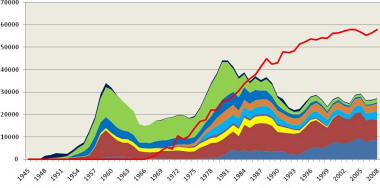AUSTRALIA'S uranium sector has renewed its attack on the Queensland government for continually rejecting mining yellowcake in the sunshine state.
Alan Eggers, the man who had built Queensland's most successful uranium explorer, Summit Resources, said the ban was irrational and illogical.
"It is a political ban that has no basis of science, health or safety or commercial or any other area," he said at yesterday's Brisbane mining conference.
"It is time Queensland and the public of Queensland woke up and got into this business, which is a very safe business to be in, which will create a lot of jobs and a lot of royalties and wealth and knowledge and technology for the state."
Toro Energy managing director Greg Hall told the conference the government's list of reasons for continuing its ban on uranium mining did not stand up.
The Queensland Labor government has continually said it has no plans to lift its ban on uranium mining.
"There have been multiple reasons why the Queensland government has decided that uranium mining is not suitable for this state," Mr Hall said.
"It started some time ago, with the government saying that it didn't want competition for coal and there was an expensive report done that proved that uranium was not competition for coal."
Mr Hall added that another concern was competition for funds during the global financial crisis, which he said had not been an issue as many uranium companies had recently raised capital.
"The people of Queensland have to rethink why is the government against uranium mining?" he said.
"Is it a throwback to old 1970s rhetoric or is it something that is genuinely there?"
In contrast, Western Australia is now full steam ahead with uranium activity after Premier Colin Barnett's Liberal Party lifted the ban on mining yellowcake last year.
South Australia, with BHP's massive Olympic Dam mine, and the Northern Territory, with ERA's Ranger mine, are both pro-uranium. Victoria and NSW have blanket bans on both exploring and mining
uranium.
Geological Survey of Western Australia executive director Tim Griffin said the industry was excited when Mr Barnett lifted the uranium ban.
"There is a lot of new work going on in Western Australia on the exploration side, but more particularly in trying to get a mine up and running in the next fours years and the industry is confident it can do that," he said.
"The government is definitely supporting that target and (is) focused on trying to make the changes to allow that to happen."
 Australian Uranium News - Research
Australian Uranium News - Research



















